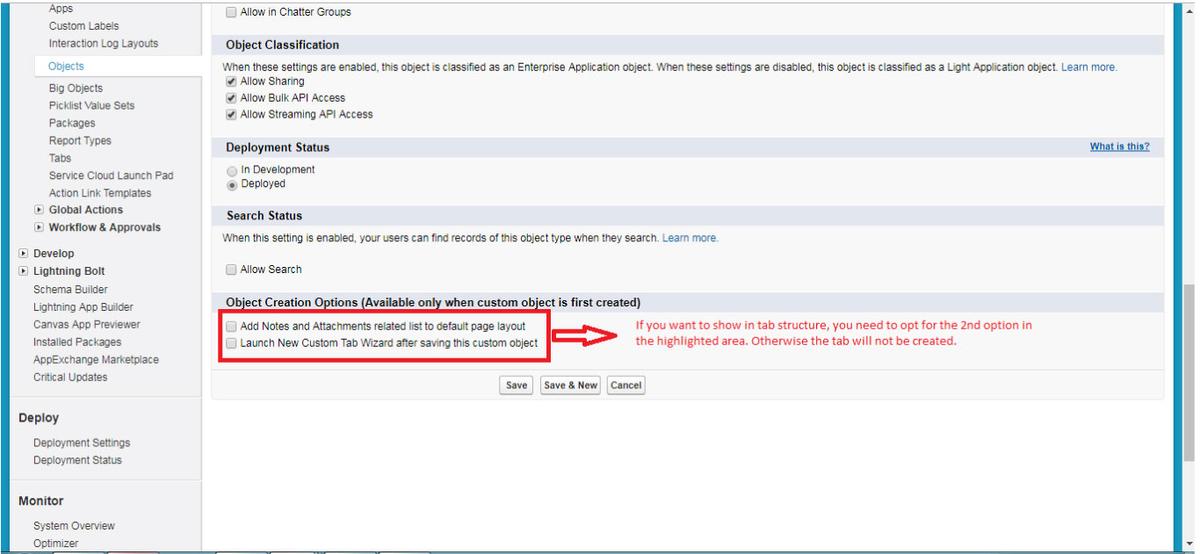- Home
- Blog
- Salesforce
- How To Create Data Modeling In Salesforce?

- Apex Class in Salesforce
- Approval Process In Salesforce
- Step By Step Guide to Becoming a Certified Salesforce Developer
- Bulkification in Salesforce
- Code Coverage In Salesforce
- Context Variables In Salesforce
- Controller Extension in Salesforce
- Controlling the program flow in Salesforce
- Custom Controller in Salesforce
- Custom Reports In Salesforce
- DML Operations In Salesforce
- Top 10 Features of Salesforce Lightning
- Governor Limits in Salesforce
- How Salesforce Certification Can Boost Your Career?
- Salesforce Lookup Relationship
- Master-detail Relationship in Salesforce
- User Management And Object Level Security In Salesforce
- Price Book in Salesforce CPQ
- Product Bundle in Salesforce CPQ
- Quote Line Editor In Salesforce CPQ
- Why Learn Salesforce?
- Record Level Security In Salesforce
- Report Building in Salesforce
- Salesforce Automation Testing With Selenium
- Salesforce Collection of Map
- Salesforce Collection of Set
- Salesforce CPQ Implementation Guide
- Salesforce CPQ Tutorial
- How to create dashboard in Salesforce
- Salesforce Developer Certification, Jobs And Salary Trends
- An Overview of Salesforce Development Environment
- Salesforce Interview Questions
- Salesforce Lightning Interview Questions
- Salesforce Lightning Tutorial
- Salesforce Enhances Its Marketing Cloud With AI And Google Partnership
- Salesforce Job Roles And Certifications
- Salesforce Tutorial
- Salesforce vs ServiceNow
- Salesforce Vs Siebel CRM'S
- Access Specifiers in SalesForce Cloud Computing - Salesforce
- An Introduction to Exception Handling – SalesForce
- An Introduction to Visualforce – SalesForce
- An Overview of Salesforce Security
- Annotation in SalesForce
- Classes, Inheritance and Overriding in SalesForce
- Configuring Salesforce Web-To-Lead Form
- Creating Visualforce Page using AJAX Programming - Salesforce
- How to Create Field Dependence in SalesForce
- How to Create Sample Apex Trigger in SalesForce
- How to Define Validation Rules in SalesForce
- Object Relationships Overview – SalesForce
- SalesForce Integration and Environment in Cloud Computing
- SalesForce Deployment and Assertions
- Shallow copy and Deep Copy in Cloud Computing - Salesforce
- Security and Audit Trail in Salesforce
- Salesforce SOQL
- SOSL Of Salesforce
- Standard Controller In Salesforce
- Test Class in Salesforce With Example
- Testing APEX In Salesforce
- Time Dependent Workflow Rule - Action
- Trigger Scenarios in Salesforce
- What is CRM? - A Complete Beginners Tutorial
- What is Salesforce Administrator?
- What is Salesforce CRM?
- Why You Should Learn Salesforce Skills
- Workflow Rules In Salesforce
- Configuring Tasks in Workflow Rules
- How to call APEX Class
- Context Variables
- Configuring Email alert in Workflow Rules
- Salesforce Web Services
- Salesforce Vlocity Interview Questions
- Salesforce CPQ Interview Questions
- Visualforce Interview Questions
- Salesforce Tools
- Salesforce Integration Interview Questions
- Custom Settings in Salesforce
- What is Salesforce Database?
- Salesforce Data Loader
- Salesforce Platform Events
- What is Salesforce Marketing Cloud - Definitive Guide
- Bucket Field In Salesforce - Bucket Column Salesforce
- What is Junction Object In Salesforce?
- Sharing Rules in Salesforce
- What is Salesforce Architecture?
- Salesforce Projects and Use Cases
- Salesforce Marketing Cloud Integration
- Microsoft Dynamics VS Salesforce
- Salesforce Admin Projects and Use Cases
Data Modeling in Salesforce
| In this Salesforce Data Model, you'll learn |
What is Data Model?
A data model is defined as a method to represent tables in the database in an understandable human language. Tables in the database are used to understand the relationships among different objects.
From a database point of view, a table and object are similar, fields present in the object are considered as a column of the table and a single row of this table is considered as a record. Data Model is a collection of objects.
Types of Objects in Salesforce
Various types of objects are supported by salesforce; they are:
- Standard objects
- Custom Objects
- External objects
| Want to enhance your skills in dealing with the world's best CRM, enroll in our MindMajix's Salesforce Online Training |
1. Standard objects
Standard objects are created by salesforce, and they are used by the salesforce CRM. Objects which are regular and related to CRM are already present in the salesforce.
2. Custom objects
When standard objects are not able to meet the business requirement or need, then custom objects come into the picture. Customers create custom objects according to their requirements. Custom objects can be like student objects, property objects, etc.
The information related to objects can be stored in four types of fields, they are
- Identity
It is considered as an individual identifier that is generated automatically for each record, and it is 15 to 18 characters long.
- System
This field is considered a read-only field because this field provides read-only information. It provides information like who created the record and who edited the record.
- Name
This is the only mandatory field for custom objects which is filled by text or auto number.
- Custom
Any field apart from the above-mentioned fields is called a custom domain, and this field has a custom data type associated with it.
3. External Objects
If anyone wants to use external data in the salesforce, then through external objects, we can do that. We will use certain object relationships to implement external objects.
Relationships among objects
Salesforce supports two types of objects relationships; they are:
- Lookup
- Master-Detail
Lookup
When two objects are connected through a Lookup relationship, then fields of one object can be accessed by another object. Lookup relationships are implemented in two ways: 1) one-to-one and 2) one-to-many. Objects which have Lookup relationships are sometimes connected, and sometimes they are not connected.
Master-Detail Relationship
When two objects are connected through a Master-Detail relationship, one object will be the master, and the other object acts as its detail. In other words, we can say that one object is a parent and the other object is a child.
In this relationship, the behaviour of the child object is monitored by the parent object. A child object must mention its parent object before storing it in the database. The relationship between child and parent object is so tight in such a way that when the parent object gets deleted, then the child object must be deleted.
For more information read our Salesforce Tutorial
Junction Object
Junction objects come under Custom objects which can link or connect two objects. Junction objects connect two objects through a Master-detail relationship.
Creation of Custom Objects
-
Go to Setup
-
Type objects in the Quick Find box, when the object appears to click on it.
-
When we see a new custom object option, then we have to click on it.
-
Custom object wizard will appear, and it will assist you in the custom object creation process.
In the above screenshot, we can see how a custom object is created by filling the required fields,
When we reach the bottom of the page, we can see an option called "Launch New Custom Tab Wizard after saving this custom object" through this option we can create Tab for the new custom object.
Relationships in External Objects
1. Lookup Relationship
This relationship connects a child custom, external or standard object to parent custom or standard object.
2. External Lookup Relationship
This relationship connects a child external, custom or standard object to a parent external object.
How to design the data model
When you know how the data is used, we can model that data. One of the best procedures for data modelling is to reduce custom objects and use more standard objects. This procedure is not applicable when we have to store integrated data.
When we have to load external data into the standard object, then we have to see how the data is used in the standard objects.
| Want to learn more about creating a data model in Salesforce, then read our Frequently Asked Salesforce Interview Questions and Answers blog |
Data Management
Salesforce or any other CRM is data-oriented, thus it is the environment's responsibility to manage the data issues like importing or exporting data. To maintain the data, various built-in features are present in salesforce they are:
- Data import wizard
- Data Loader
In Salesforce, we can import the data by following two techniques.
Data import wizard
This technique is used when we have the import size within 50000 records. It contains a plain interface for parameter configuration and for comparing the fields saved in a file.
Data Loader
Data Loader is a client application that is used to load data up to 5 million records. Any type of file or object is loaded using the data loader. Through this technique data loading and field, mapping tasks are automated.
Importing and exporting data is not as simple as it looks; several tasks like pre-import, Postimport. Pre Export and Post export are present in the import and export of data.
Related Article: Salesforce Data Loader
Data Import
Steps to be taken for data importing are as follows:
- The export file is created.
- Search and find duplicate records and find if any then delete that duplicate record.
- Match the fields in the file with salesforce.
- Provide the required changes to match with salesforce.
Data export
For data exporting purposes, we have some trusted third party applications like data loaders. The natural data export allows you to export all the data into the salesforce. To go to the data export wizard, we have to type data export in the find box and click on the data wizard.
When we reach the data export home screen we can see two options, first one is export now which starts the exporting of data immediately, and another option is schedule export which makes the data exporting automated and it makes the data exporting a repeating event.
When the export procedure is completed, a file link is given along with the exported file. The format of that file is zip format, and it can be downloaded to the local machine from there.
For scheduling the data export, we have to click the schedule data export button present on the home screen of the data export. We can select the frequency of the data export with the help of the day of the month and span of this service.
Conclusion
In Salesforce, Data modelling is used to model the data present in the database. To understand the relationship between the objects we use tables. In data modelling, we will have different types of objects and different relations among those objects. Salesforce professionals have to study data modelling to handle the data.
In the next topics, we will discuss in detail “Report building in Salesforce”. Keep following us for more information on Salesforce Administration.
 On-Job Support Service
On-Job Support Service
Online Work Support for your on-job roles.

Our work-support plans provide precise options as per your project tasks. Whether you are a newbie or an experienced professional seeking assistance in completing project tasks, we are here with the following plans to meet your custom needs:
- Pay Per Hour
- Pay Per Week
- Monthly
| Name | Dates | |
|---|---|---|
| Salesforce Training | Jan 06 to Jan 21 | View Details |
| Salesforce Training | Jan 10 to Jan 25 | View Details |
| Salesforce Training | Jan 13 to Jan 28 | View Details |
| Salesforce Training | Jan 17 to Feb 01 | View Details |

Arogyalokesh is a Technical Content Writer and manages content creation on various IT platforms at Mindmajix. He is dedicated to creating useful and engaging content on Salesforce, Blockchain, Docker, SQL Server, Tangle, Jira, and few other technologies. Get in touch with him on LinkedIn and Twitter.
















